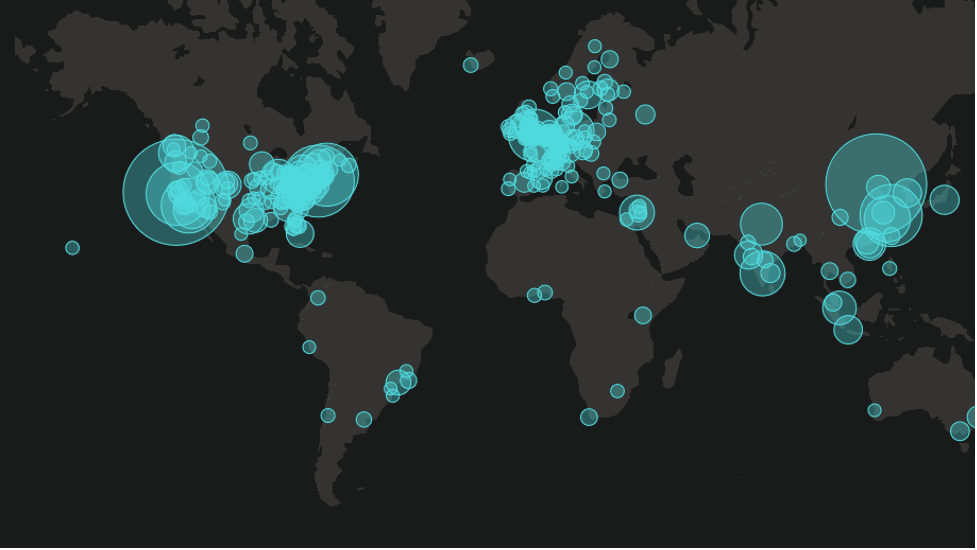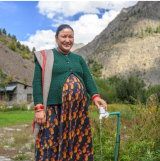Helping Entrepreneurs Helps Us All

Once in a blue moon, exceptional ideas turn into great companies that change the world
Dr. Eleni Gabre-Madhin
In a recent Global Entrepreneurship Report, Africa was shown to be the region that reports the most positive attitude towards entrepreneurship, with three-quarters of working-age adults considering entrepreneurship a good career choice. This is heartening since youth unemployment and underemployment are concentrated in low- and middle-income countries (LMIC), which are home to 87 percent of the world’s unemployed youth — 62 million young people, according to the International Labor Organization.

Today’s youth are more entrepreneurial than ever, starting twice as many businesses as the baby boomer generation. However, capital availability in the global south is abysmally low, hampering these talented self-starters’ capacity to get their innovations off the ground. Since 2016, Sight and Life has been running our Elevator Pitch Contest, which helps refine, support, and launch the inventions of talented young people who are working to develop new agricultural and nutrition technologies.

Take, for example, Nicholas Myers, a chemist and pitch contest winner. His Paper Analytical Device – a lab-on-paper that measures iodine levels in salt and urine samples – helps monitor iodized salt programs at a low cost in real-time. But just because a better solution to a problem exists, like Myers’ invention, does not necessarily mean that it will be adopted. With a shift from the nutrition field to public health, Myers found additional uses for his innovation, adapting the iodine test card to also measure levels of penicillin-class antibiotics present in pharmaceuticals with greater than 95% accuracy to detect breaches in medicine compliance. Such discoveries of multiple uses accelerate the adoption of an invention.
At the time of the contest, my invention was making its way through the “Valley of Death,” which is a relatively low funding period between R&D and commercialization. The contest provided a platform on which I, a chemist, reached hundreds of experts in the micronutrient sector, and these multi-disciplinary connections are critical to pushing an invention through the “Valley of Death” and to commercialization. – Nicholas Myers (Read the full interview here)
Several other barriers exist to scaling up nutrition interventions in LMICs, like access to high-quality products in a particular area, inflated costs of public health goods and services, erratic cash flow, and public health facilities that are difficult to reach, underfunded, understaffed, and understocked. To overcome these barriers, Sight and Life has studied sustainable social enterprises that integrate nutrition interventions at scale to benefit large numbers of underserved communities.
Why consider social business models and entrepreneurship when it comes to public health? Over four billion people carry the burden of a “poverty penalty” and are forced to pay more for lower quality basic public health goods and services due to market inefficiencies. Of these people, only a tiny fraction can benefit from government or humanitarian services, and even then, these resources are often plagued with piecemeal or inadequate funding. This large percentage of the world’s population is often referred to as the Base of the Pyramid or BoP. Grant-funded humanitarian projects may have limited reach and finite intervention periods, but the BoP represents a five trillion-dollar market value. Models that tap this market could simultaneously improve the quality of life for the poor and outlast the sporadic, albeit well-meaning injections of charitable sources. Enterprises with sound business models can make quality public health goods available and affordable.
My team and I have witnessed such success in improving food systems by supporting entrepreneurship and promoting effective business models in the Global South. We are doubling down, initiating Food Systems Innovation Hubs in emerging markets. The hubs will nurture entrepreneurs in these rapidly growing economies by establishing sound business models and forming partnerships with investors, donors, government, and companies in the localities where they operate.
There is a massive well of untapped entrepreneurial talent in the developing world, and Sight and Life is committed to helping them help us all in our quest to alleviate malnutrition. To learn more about Food Systems Innovation Hubs, watch the recent webinar and learn how to be part of the coordinated effort to improve the world’s food systems. Read further on the topic by clicking HERE.
Read next
Discover more
News & announcements
Find out what is new at Sight and Life
Multimedia
Explore our videos, podcasts, and infographics




